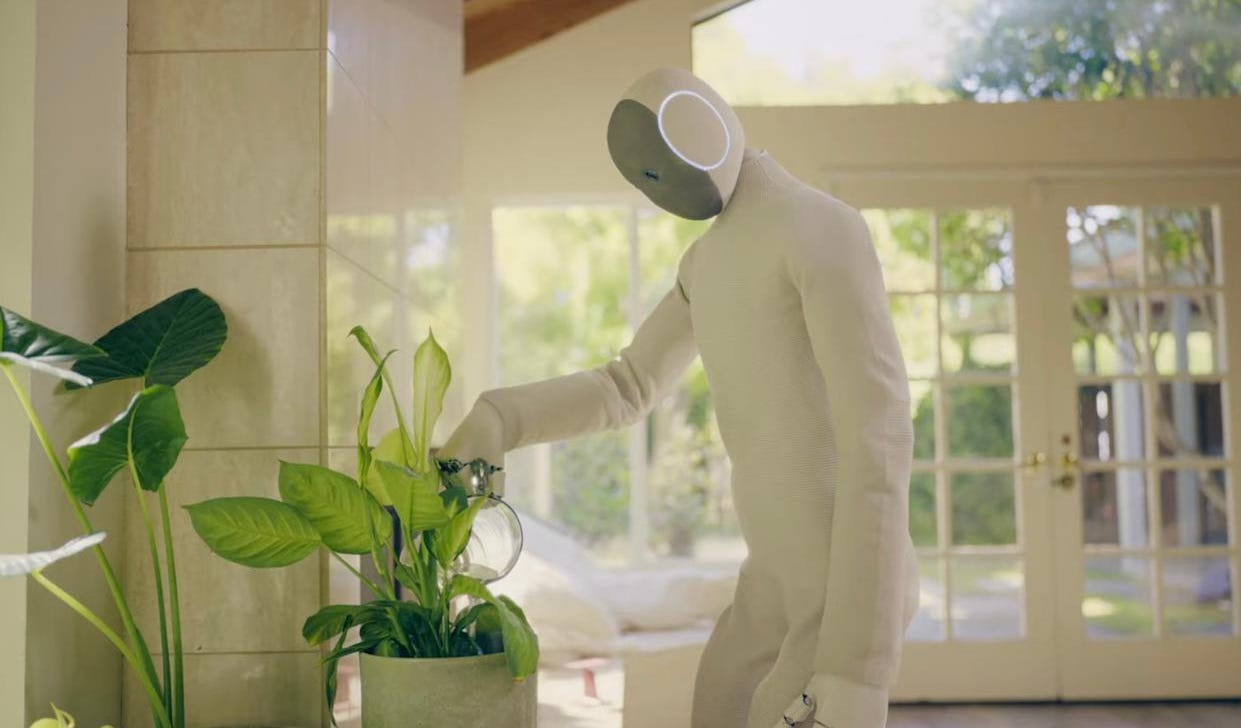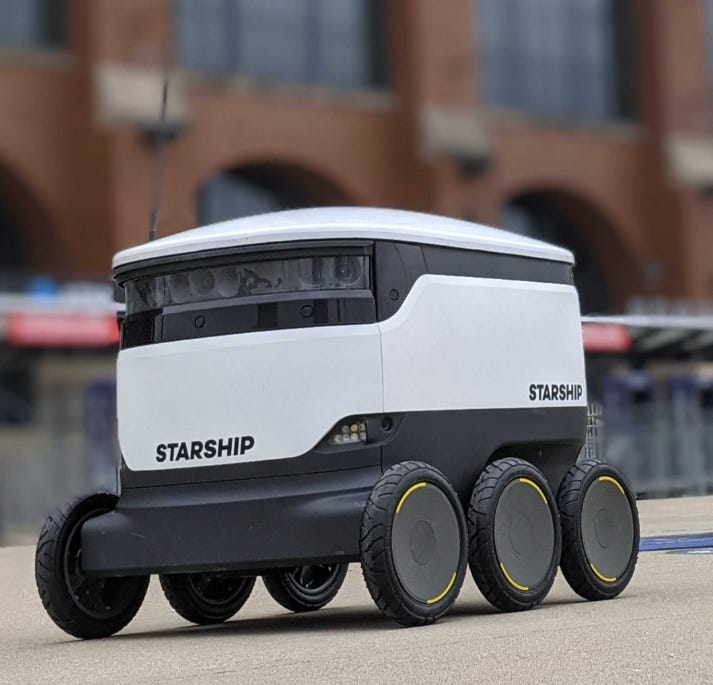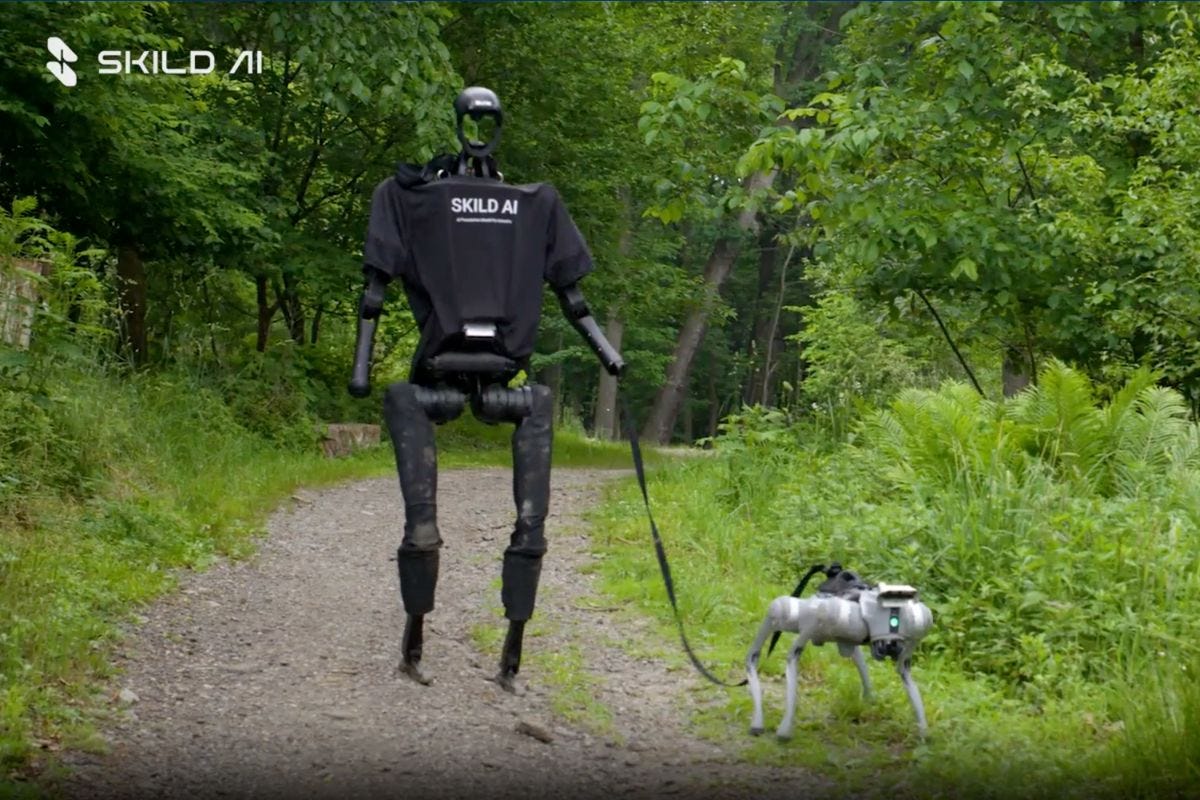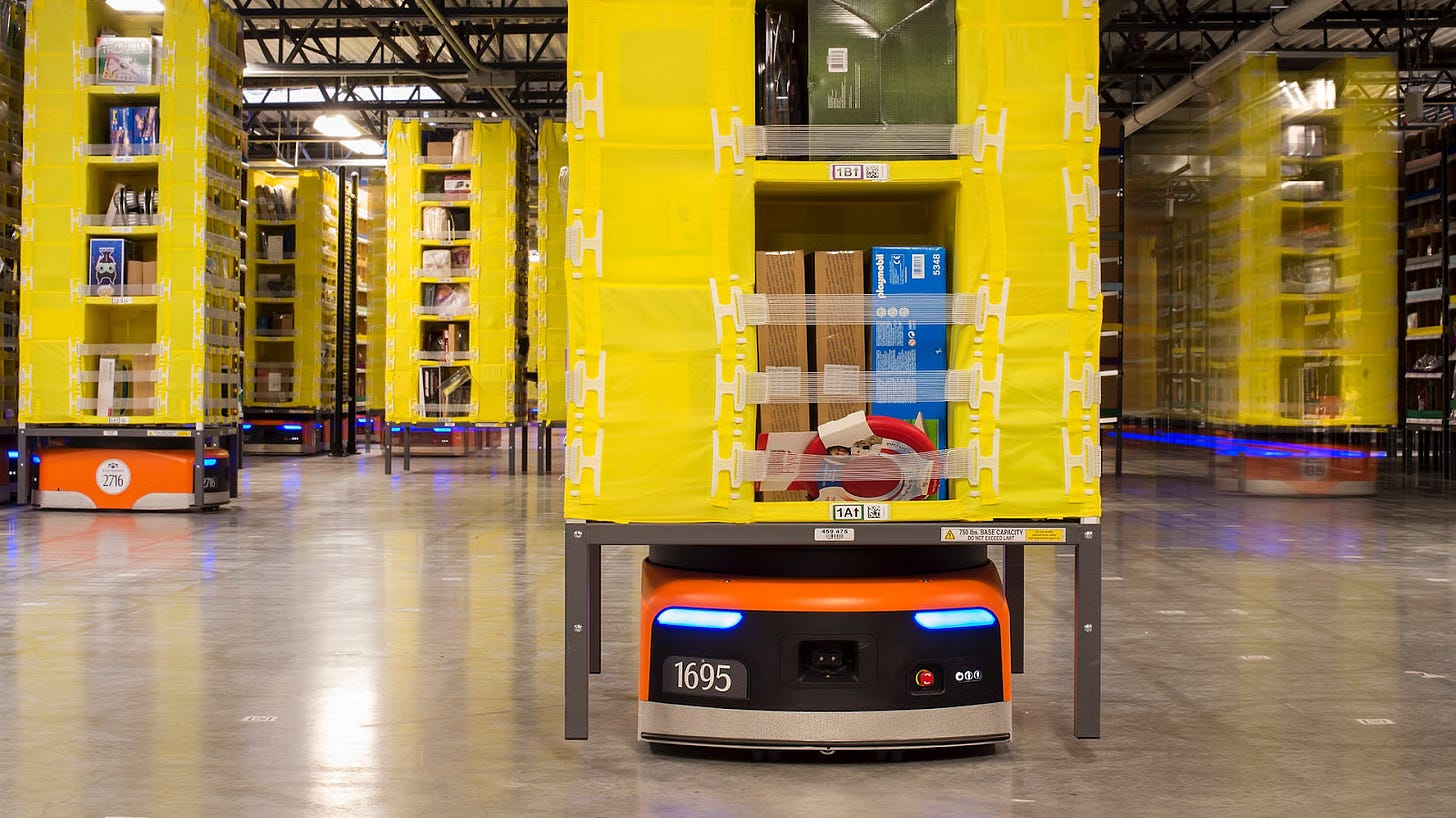Who Actually Makes Money When Robots Work?
$12 billion in funding, three ways to win, and a field guide to separating the real companies from the grifters.
1X opened preorders for NEO, a home robot that costs $20,000 upfront or $499 a month. The website looks like every other VC-funded DTC brand from 2015—millennial beige, sans-serif typography, the works. Buried in the fine print and tech press coverage is the actual product: for most chores, a human in a call center will drive the robot around your house via teleoperation while the system records training data for autonomy that doesn’t exist yet.
Essentially, you’re buying a very expensive camera rig that lets strangers do your laundry.
The launch is a crystallization of all the promise and peril of robotics today. $500 bucks to do your household chores is amazing, but the unit economics have to be razor thin for the company. The teleoperation is fine to do as long as customers are aware, but still not quite the intelligence magic we would hope for. The hardware looks great, but in a WSJ video the robot took about five minutes to load two glasses and a fork into a dishwasher. Every note of magic is accompanied by a bitter aftertaste of “not quite ready yet.”
Over the last 6 months, I’ve talked with dozens of researchers, investors, and operators in robotics, trying to understand this contrast. These people were working on everything from autonomous fighter jets to mining robots to humanoid form factors. All of them, every single one, strongly believed that robots will act as a generalizable replacement for manual labor very, very soon. Capital is starting to dramatically flow to this belief: robotics startups raised about $6.4 billion in 2024, and had already cleared just over $6 billion in the first seven months of 2025, with the data service projecting that this year will eclipse 2024’s total.
If they are right, we are looking at wholesale reinvention of human society.
To be honest, that feels a little grandiose of a premise for this humble newsletter to tackle. Instead, I wanted to understand a more crass question. If robots truly become capable of replacing manual labor, who gets rich? In understanding the question of which startups profit, we can understand everything else.
Let’s build from first principles.
What is a robot, really?
A machine is obedient. It runs a script, does the thing, and when the environment shifts even a little, it politely dies until a human hands it a new script.
A robot is different. A robot runs a loop of sense → decide → act → repeat.
It has sensors that build a picture of the world, a policy that picks the next move, and actuators that go change reality. And then—crucially—it checks whether reality cooperated and adjusts. You can move the couch, add a dog, dim the lights, spin the robot around three times but it still tries to achieve the goal without you puppeting every joint.
But the most important distinction is something unexpected: liability.
A robot is a device whose maker is willing to take responsibility for what happens when it’s let loose in the chaos of reality. Increased autonomy increases liability. The moment you sell something that makes its own choices in an unstructured environment, you’re underwriting outcomes versus individual activities.
It is akin to the practice of medicine. There are plenty of doctors who are objectively dumber than the advice a frontier LLM can produce today. But ChatGPT cannot “practice medicine,” not because it’s incapable, but because OpenAI is (understandably!) unwilling to accept the liability—no malpractice premiums, no insurance billing, no legal exposure. The capability is there(ish) but the risk tolerance is not. Robotics lives at that same frontier but a few years behind where ChatGPT is today.
There is also an economic distinction that I found useful for my mental model:
A machine automates a task.
A robot substitutes or augments a worker.
Machines compete on throughput and depreciation schedules. Robots compete on “How much does an hour of reliable work cost compared with a human?” The economic boundaries are fuzzier than the technical ones, but I have found this framework useful to determine who the buyer is (line manager vs CEO) and how the pricing is set (rental vs startups taking a percentage of the value of the robot’s labor).
It is tempting to focus on the AI components of robots, but that is the entirely wrong way to consider this technology stack.
Robots are layers of technical bets
An engineering diagram says a robot is sensors plus model plus actuators. That’s true, but not very helpful. A more honest way to see a robot as a stack of bets about how messy the world is allowed to be. You can group them these bets in four categories:
Body: What the robot is made of
Senses: How the robot perceives the world
Brain: What kind of software is allowed to make decisions
Ops: What happens when the robot breaks
Compare something like Starship—a company that builds small six-wheeled autonomous delivery robots that trundle along sidewalks and college campuses—to a warehouse prototype you see in a research video. Starship’s chassis, wheels, and plastics are obviously designed for curbs, winter, drunk college kids, and the occasional car bumper. A lab robot with exposed wiring and spindly linkages is implicitly betting that life will happen on a polished concrete floor watched over by grad students.
Hardware decisions are probability distributions manifested in metal. If you guess wrong—if the environment is harsher than you budgeted for—that mismatch doesn’t show up until you are live with a customer. Then founders start saying stuff like “surprisingly high field failure rate” and “our gross margin got murdered by spare parts.”
The senses are a bet about how much chaos you need to see
A single front-facing camera says: “I believe in the benevolence of warehouse lighting and relatively cooperative scenes.” Add depth cameras, lidar, and tactile pads and you’re saying: “I do not trust lighting, or floor flatness, or object pose. I want redundant evidence.”
Look at Zipline, which runs long-range autonomous delivery drones for medical and retail logistics, versus a cheap indoor cart. Zipline’s delivery drones fly in wind, rain, and changing light. They stack cameras, depth perception, and GPS because the environment is hostile and the consequences of being wrong are large. Meanwhile, a low-cost warehouse cart that only follows QR codes on the floor is making the opposite bet: the facility will be tightly controlled, so it can get away with almost no perception at all.
Better sensing is expensive—more cost, more power, more compute—but it buys you robustness in all the “this was not in the training data” moments.
The brain is a bet about how much structure the task really has
If you lean hard on classical planning and control, you’re assuming the task and the environment have a lot of usable structure. You think you can describe the world with geometry and constraints, do optimization, and get something that works as long as nothing too weird happens. This is where robotics has been up until about 2023 with the popularity of vision-language-action models. These models process camera feeds and natural language instructions to generate robot control commands, using knowledge from pretraining to handle manipulation tasks beyond their physical training data.
Companies like Skild AI—which trains large “foundation models” meant to control many different robots—lean much harder on end-to-end or foundation-model-style control: more of the intelligence is in the weights, less in hand-engineered machines. Their bet is: “The world is so messy that we’re better off letting a big model discover its own abstractions, as long as we feed it enough data.”
Most robots in production today split the difference.
The ops loop is a bet about how wrong you’re allowed to be
Teleoperation, remote monitoring, field technicians, OTA updates, spare parts, SLAs—all of that is the system’s tolerance for being wrong about the first three layers.
Look at Serve Robotics, which operates small autonomous delivery robots for last-mile food and grocery. They both have teleoperators in the loop who can take over when a robot encounters a weird situation like a construction zone or a drunk guy trying to open the lid. That doesn’t necessarily mean the robot sucks. It just means the founders are saying, “We expect to be wrong often enough that it’s worth staffing humans to catch us—and we’ll use those interventions as training data.”
Contrast that with a tightly geofenced, indoor-only goods-movement bot in a big-box retailer like Amazon. There is no live teleop at all. Instead, the bet is, “We will constrain where and how this robot operates so much that the autonomy never sees true chaos.”
Even something like Anduril, which builds autonomous defense systems like towers, drones, and underwater vehicles plus the software to orchestrate them, makes a different ops bet: they assume highly trained customers, formal rules of engagement, and long-term government contracts, so they can afford heavier setup and integration in exchange for fewer day-to-day human interventions.
From the outside, all of these systems look like “robots.” Under the hood, they represent different answers to the same question:
How much of the world’s mess do we handle in hardware, how much in software, and how much in ops?
That’s why two companies can point robots at what sounds like the same problem—“deliver this thing across town”—and end up with totally different economics and reliability. One bets on rugged hardware and conservative behavior, so they rarely fail but cost more. Another bets on cheap hardware and heroic software, so they look incredible on stage and drown in support tickets. A third shoves more complexity into operations—tight routes, handpicked neighborhoods, lots of teleop—and quietly makes money.
Seen this way, “progress in robotics” isn’t just better models. It’s the slow, painful process of redistributing uncertainty across these four layers until the whole stack makes economic sense. When a robot “gets better,” it’s usually because someone:
tightened the body bet (fewer physical failures)
improved the sensing bet (fewer blind spots)
moved brittle rules into a better planner or policy
changed the ops bet (smarter teleops)
Only after you internalize that does it make sense to talk about different categories of robotics companies. What distinguishes them isn’t just market, it’s where in this stack they choose to wrestle the world’s messiness to the ground.
For paid subscribers, we’ll now go over:
The three types of companies that will win in the space
The technical bottlenecks that are holding robotics back (and are just starting to be fixed)
Over a dozen leading startups in the space
The five arenas that startups are battling it out in
Keep reading with a 7-day free trial
Subscribe to The Leverage to keep reading this post and get 7 days of free access to the full post archives.









